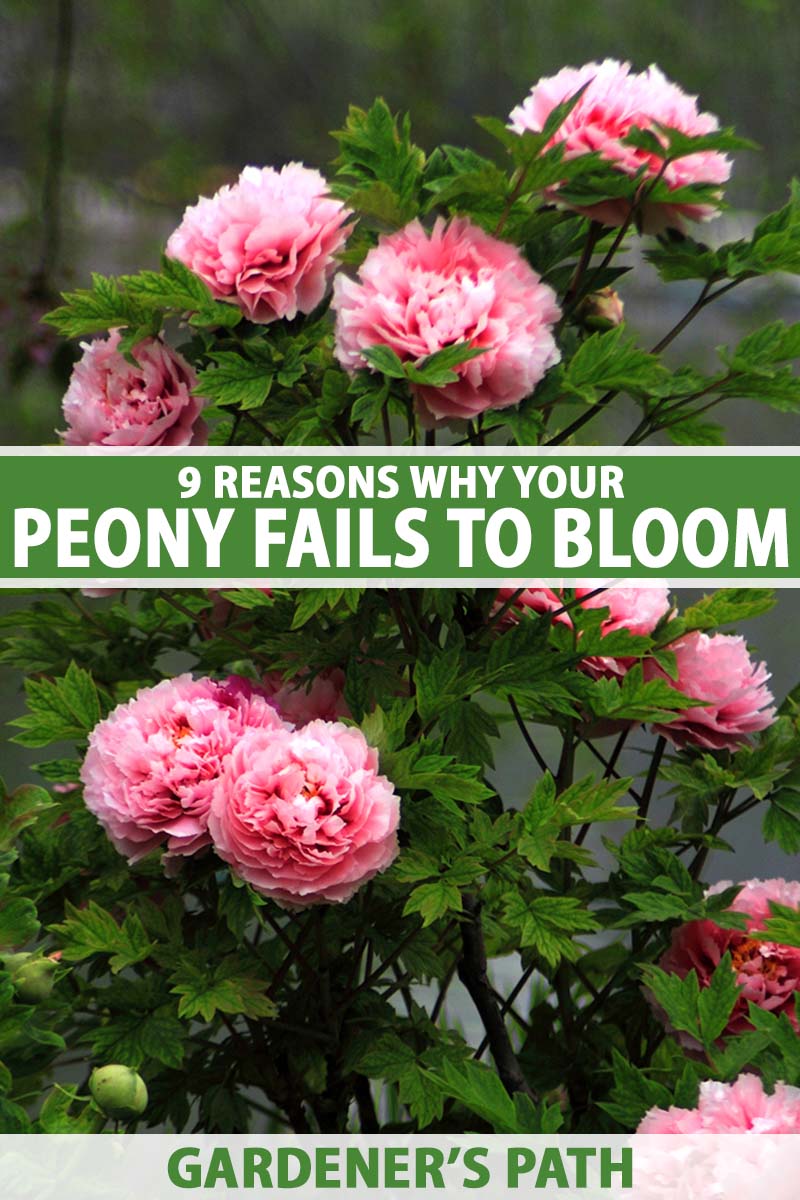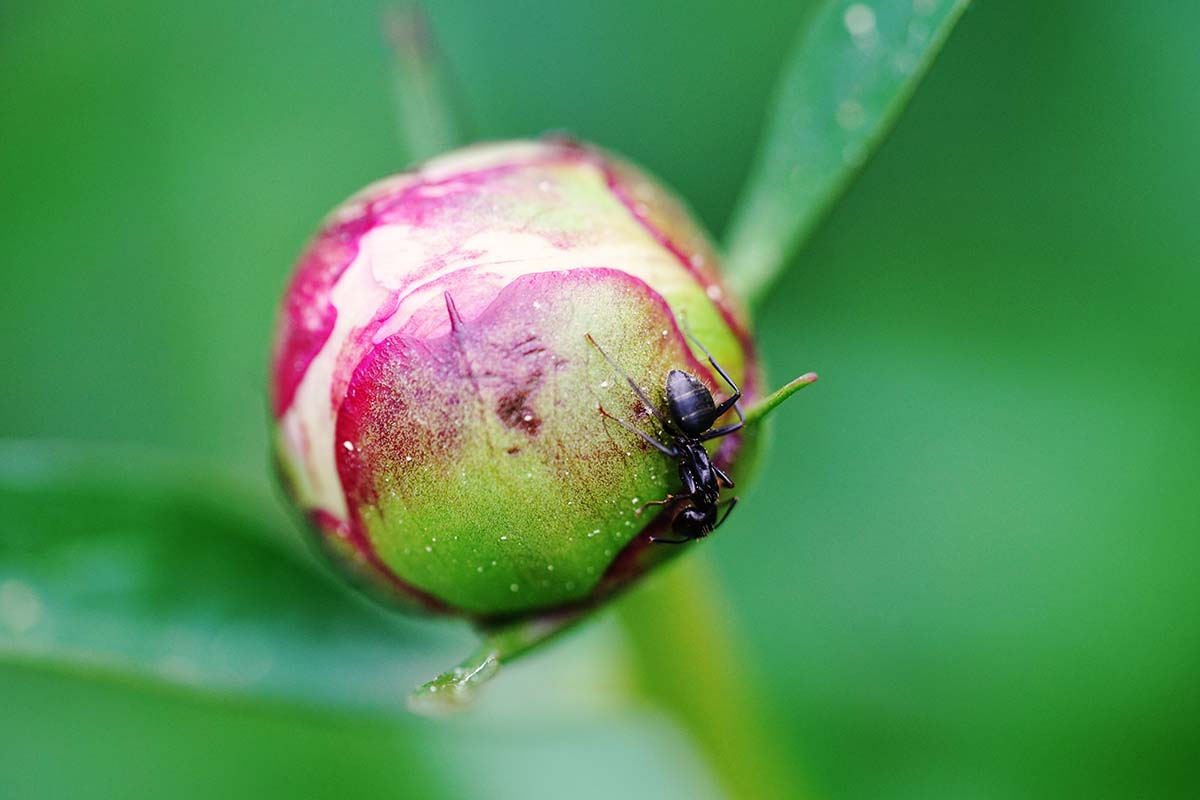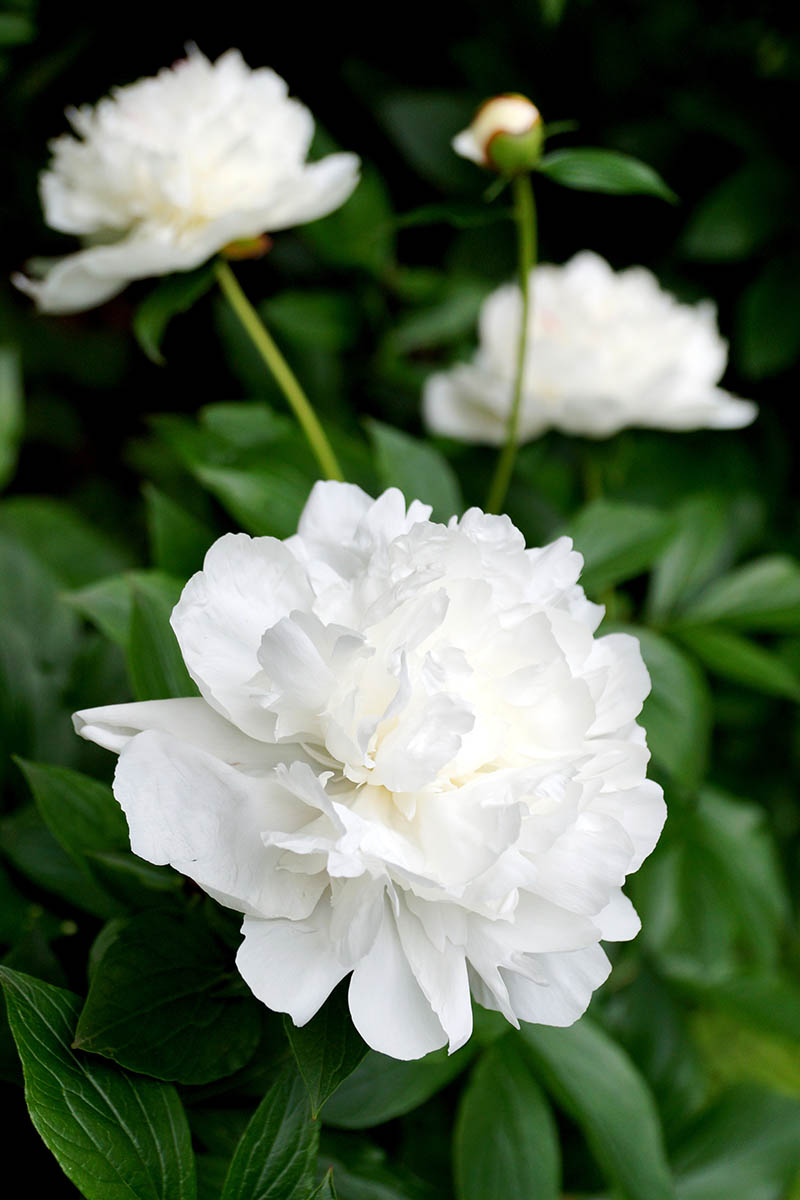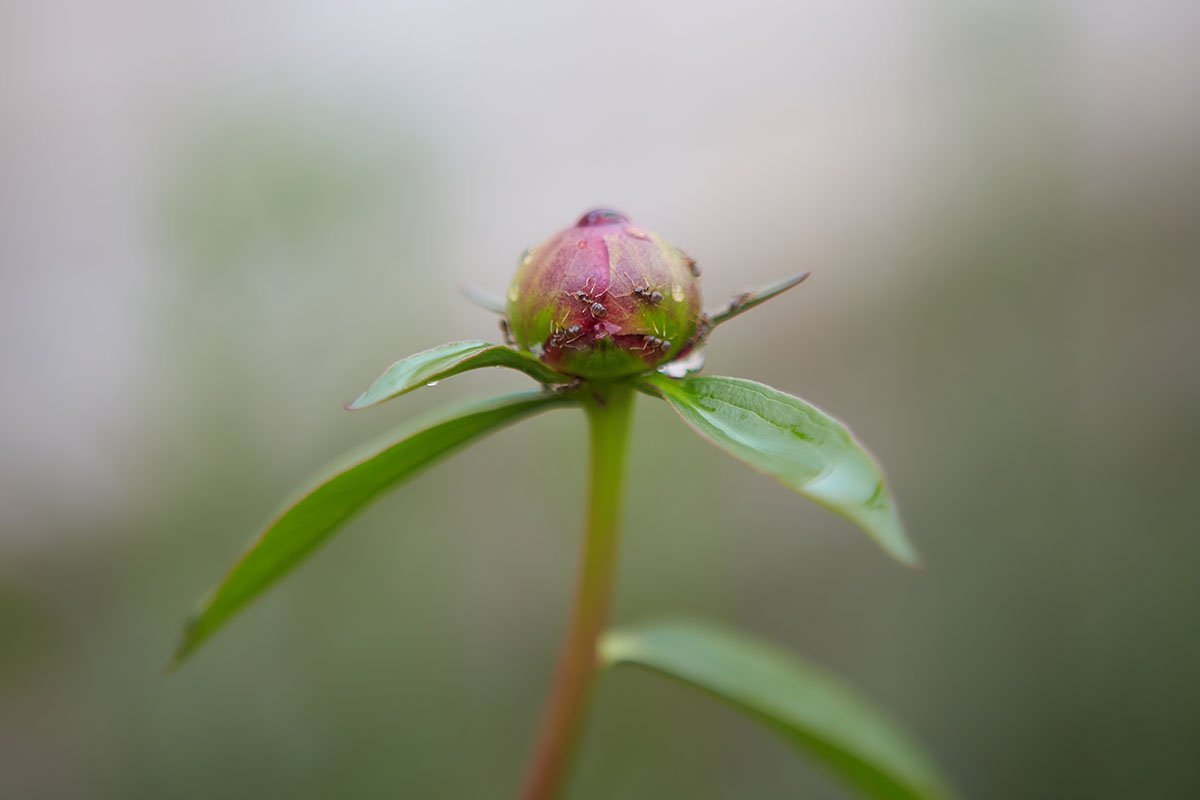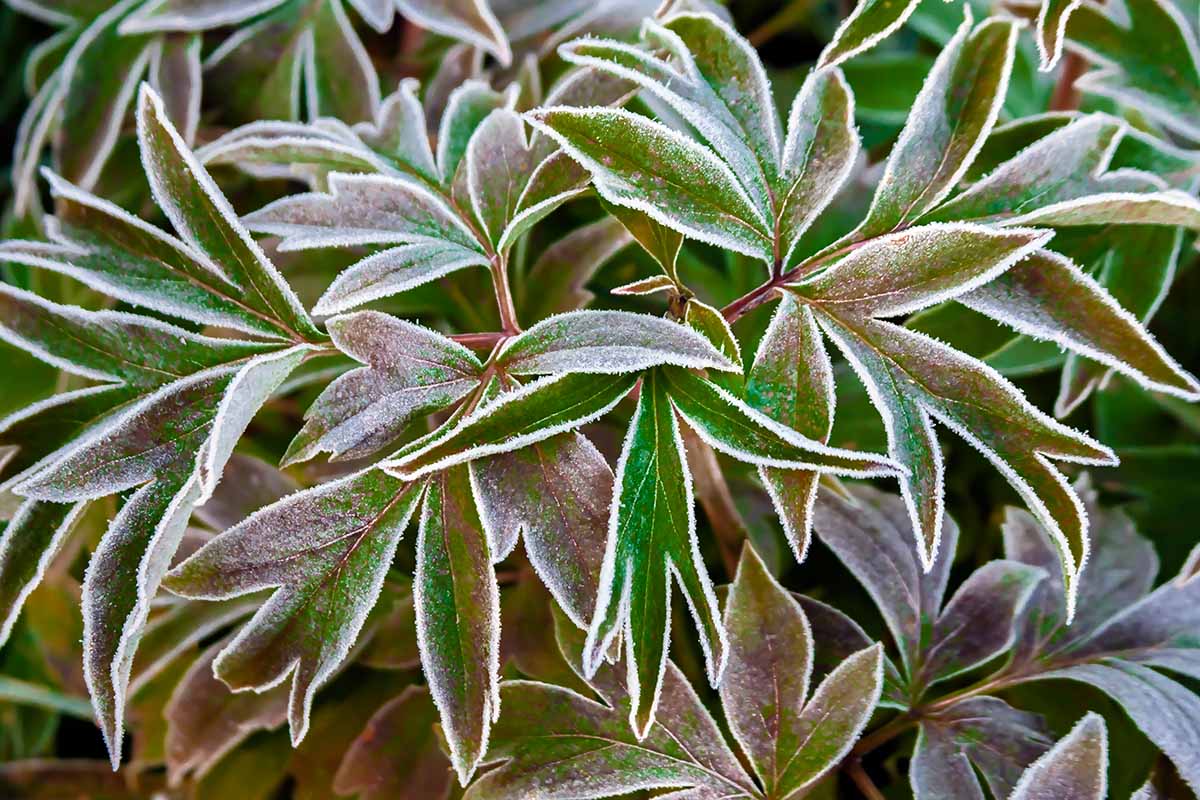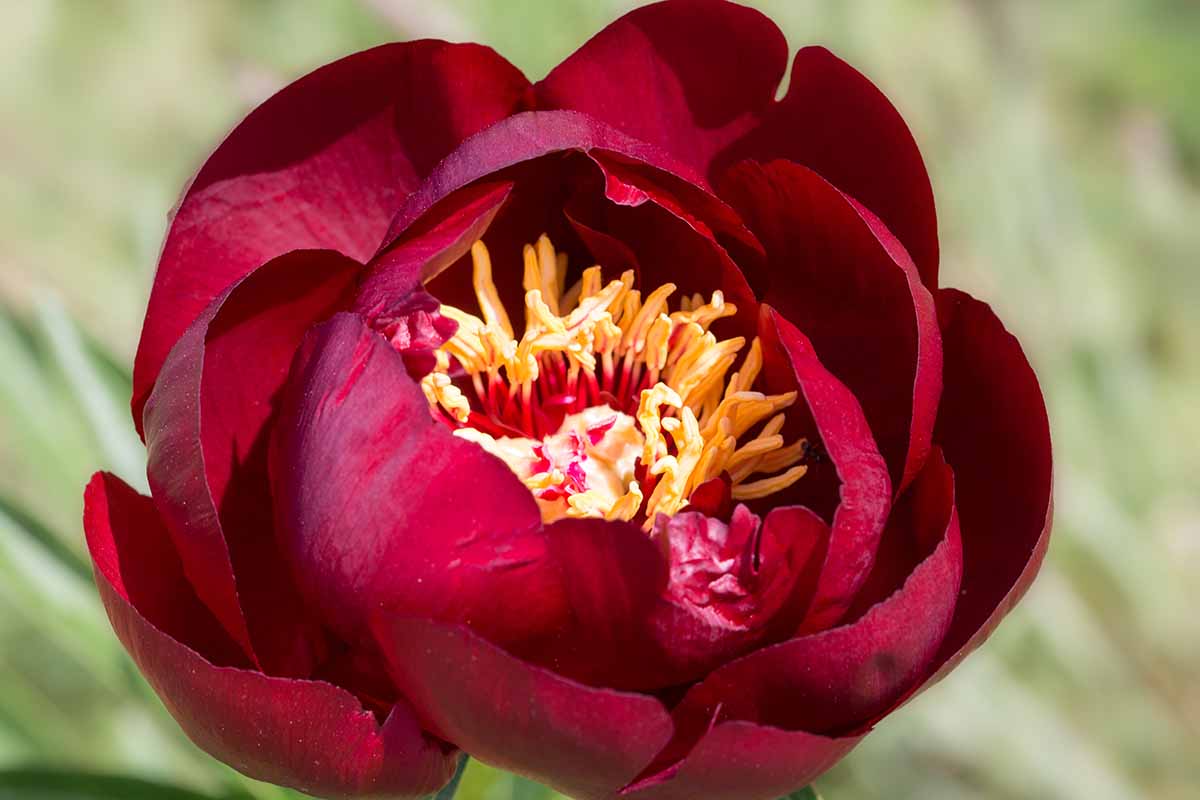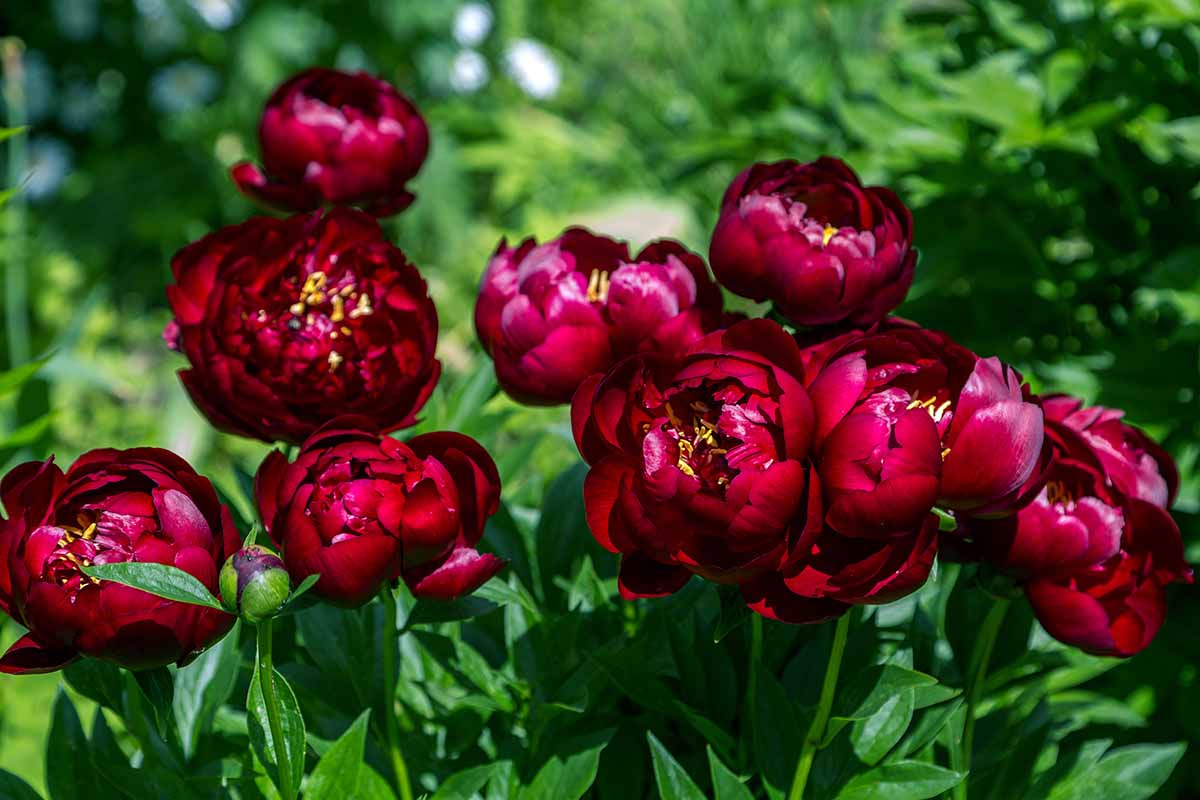I’ve met a gardener who lives well inside a no-frost climate who is so determined to grow swathes of these elegant flowers, she takes drastic steps. Each winter, she regularly dumps buckets of ice and containers of near-frozen water around her plants to simulate their favorite conditions. Amazingly, it works! We link to vendors to help you find relevant products. If you buy from one of our links, we may earn a commission. If you choose a mix of the right cultivars and plant them in a sunny spot in well-prepared soil, you can enjoy a show of their extravagant beauty over six weeks or so in spring and early summer. So it can be gut-wrenching to wait a whole year for the big show, only to watch promising little buds wither and die. One suspect you can immediately rule out is ants. They don’t cause damage to the plant or buds, and they’re not the type of ant that likes to march inside either, so you can leave them in peace. They’re actually mutually beneficial buddies of peony plants, feeding on the nectar naturally exuded by the buds and flowers. In return, the ants help to keep away some pest insects. There’s a common myth that without ants, buds won’t bloom – but it’s not true. In this guide, we’ll look at the most likely reasons your peony buds aren’t blooming: There are hundreds of varieties of peony and each type may have a slightly different reaction to your garden’s climate, soil, sunlight hours, and even how deep you plant their crowns. It can be confusing to have a bed of plants flaunting dozens of flowers, while just inches away a different variety is covered in buds that are dying off. If you have one problem plant amongst a bed of winners, it may be a variety that needs more of something, or less. That might be slightly different soil nutrients from the others. Perhaps it’s getting hit by a cool breeze coming around the corner of the house. Or maybe it prefers an extra hour of sun. Here are nine reasons why your peony buds aren’t moving on to the blooming phase:
1. Not Enough Sun
These are tough plants. The proof: Alaska has more than 140 commercial peony farms, producing premium flowers that are exported around the world. However, even the hardiest plant can fail if it’s too stressed. Common signs of stress include no buds or buds that start to swell but never bloom. One of the most common causes of stress is not enough sunlight. Ideally, peony plants need six to eight hours of full sun per day so the plant can produce and store enough carbohydrates to support flower production in spring. If you’re in a warmer climate, in Zones 7 to 8, plants may benefit from partial afternoon shade as very hot temperatures can also cause stress – and fade flowers as well, when they do bloom.
2. Planting Too Deeply
The ideal planting depth for peony crowns depends on your growing zone – there’s excellent advice on the ideal depth for different climates in our guide to caring for peonies in winter. If you plant the roots too deeply – or worse, upside-down – the plant will struggle to produce enough energy for its needs, and you’re likely to see no buds or ones that don’t bloom.
3. Unfriendly Weather Conditions
Peonies love the cold, and it plays an important role in determining how many flowers your plant produces, stimulating bud growth in spring. Plants need around 20 to 42 days of temperatures between 32 and 40°F. But a late freeze in May can damage bud development. Typically, you’ll see them grow to be to about the size of a pea, then stop as the structure inside is too damaged to continue forming. A late spring frost, with temperatures less than 29°F, may also damage or kill buds. And if the temperature drops below 23°F, you could lose them all. Cover plants if you get the occasional late frost. If it’s a regular occurrence, consider moving plants to a more protected area – but note that they don’t often respond well to transplanting. Conversely, dry or hot conditions may also cause problems. These plants like well-drained soils but also need a regular supply of water to maintain growth. If plants get too dry in spring, buds may stop developing. If it’s too dry over summer, the stress on the plant will affect the following year’s bud production.
4. Too Much Food – Or Sometimes Not Enough
The American Peony Society’s basic rule is blunt: don’t fertilize these plants. Generations of professional gardeners at the Nichols Arboretum at the University of Michigan agree. The arboretum has one of the world’s premiere peony collections containing more than 800 varieties, and they haven’t used fertilizer since the 1930s. However, both the APS and the arboretum assume your peonies are growing in well-prepared, highly fertile soil. You may need to feed plants if you have poor soil, or if they’re showing signs of low nutrition including buds that don’t bloom, spindly, floppy stems, pale or yellowing foliage, and general declining plant vigor. Feeding peonies can be a difficult process. Add too much nitrogen, and the plant will respond with lots of foliage growth and very little to no bud formation. If your plants are starving, the APS recommends a light application of a bulb fertilizer after flowering and again in late August. Don’t use manure. It’s linked to Botrytis blight, which can damage buds as they’re forming and stop them from flowering.
5. Disease
The most likely disease to stop bud growth is Botrytis blight, caused by Botrytis paeoniae fungi. It’s most common during cool, wet spring weather. Look out for young stems turning brown at the base – that’s usually the first sign of an infection. Rain and insects then spread spores to the foliage and buds. Newly formed buds stop growing, then turn black. More mature ones develop brown patches, and never bloom. The American Peony Society says the best control option is to regularly monitor plants for signs of infection and remove any diseased parts of the plant as soon as possible. Remove faded and blighted flowers, buds, and leaves; and cut off browning stems one to two inches below the ground. A badly diseased plant should be completely removed to avoid spreading spores. In late fall, practice good sanitation by cutting off all the stems at or just below ground level. Place in a paper bag and burn or dispose of in the trash as even healthy-looking plants can harbor sclerotia, the resting spores and food reserves which may cause future infections. If you want to spray, the APS recommends a dilute 2-2-50 Bordeaux mixture made with one pound copper sulfate, one and a quarter pounds hydrated lime (calcium hydroxide), and 25 gallons of water. Note that this spray will slightly stain foliage.
6. Thrips
While the presence of ants can help to deter some insect pests, unfortunately they don’t deter thrips.
8. Foliage Loss
Sometimes a peony can be a victim of its own success. If you cut a lot of flowers from a prolific producer, you also remove a lot of the foliage in the process. You can apply a preventative spray of spinosad when buds are small, then reapply it 10 days later. Monterey Garden Insect Spray Spinosad is available as Monterey Garden Insect spray via Arbico Organics. Learn all about how to deal with these pests in our comprehensive guide to thrips control.
7. Age
Young, recently divided, or newly transplanted peonies need from two to five years to develop their root systems. If your plant is young and you’re only getting the odd flower, or buds develop but never bloom, it’s likely the root system isn’t mature enough to support flowers. Adequate foliage is critical to the plant’s ability to photosynthesize enough energy to form next year’s buds. Commercial farmers limit how many flowers they harvest from each plant for this reason. Ideally, leave a third to half of the flowers unpicked. Deadheading flowers isn’t an issue as the foliage remains intact. Next year’s buds form underground throughout summer and fall. Don’t cut back foliage until the soil freezes in late fall – even tatty green foliage is still working to feed the plant.
9. Zone 8 Issues
Growers in Zone 8 are right on the edge of the peony plant’s climate preference, especially in terms of available chill hours. Buds on mid- to late-blooming cultivars often struggle or fail to bloom if temperatures become too hot in late spring to early summer. Options include ‘Buckeye Belle’ (deep maroon), ‘Diana Parks’ (fire engine red), ‘Miss America’ (white with yellow center), and ‘Shirley Temple’ (white). ‘Shirley Temple’ ‘Shirley Temple’ bare roots are available in packages of two, four, or 10 for spring or fall planting from Eden Brothers.
Buds That Bloom
Most of the reasons why peonies bud but don’t bloom are easy for most gardeners to fix. The only problem is you’ll need a little patience, or perhaps a lot if you have to wait a year or two for a plant to get back to the business of blooming. Have your peonies failed to bloom? Did you figure out what was causing the problem? Let us know in the comments section below! For more information about caring for peonies and the different types you can grow, check out these articles next:
How to Plant and Grow the Classic Perennial PeonyUnderstanding Different Types of Peony Flowers
